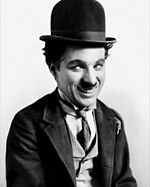1920s
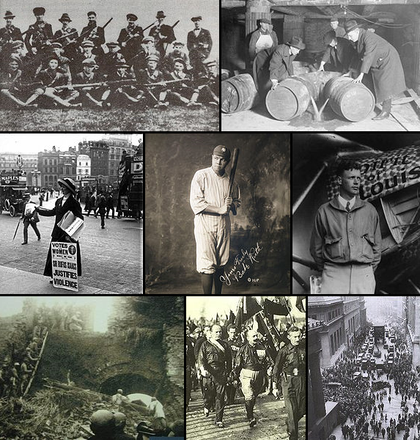
| Millennium |
|---|
| 2nd millennium |
| Centuries |
| Decades |
| Years |
| Categories |
The 1920s (pronounced “nineteen-twenties”, commonly abbreviated as the "“Twenties”") was a decade of the Gregorian calendar that began on January 1, 1920 and ended on December 31, 1929. In North America, it is frequently referred to as the “Roaring Twenties” or the “Jazz Age”, while in Europe the period is sometimes referred to as the “Golden Age Twenties”[1] because of the economic boom following World War I. French speakers refer to the period as the “années folles” (“Crazy Years”),[2] emphasizing the era’s social, artistic, and cultural dynamism.
The economic prosperity experienced by many countries during the 1920s (especially the United States) was similar in nature to that experienced in the 1950s and 1990s. Each period of prosperity was the result of a paradigm shift in global affairs. These shifts in the 1920s, 1950s, and 1990s, occurred in part as the result of the conclusion of World War I and Spanish flu, World War II, and the Cold War, respectively.
The 1920s saw foreign oil companies begin operations throughout South America. Venezuela became the world’s second largest oil producing nation.[3]
Prosperity in the 1920s was not ubiquitous, however. The German Weimar Republic experienced a severe economic downturn as a result of the enormous debts it agreed to repay as part of the Treaty of Versailles. The economic crisis that resulted led to a devaluation of the Mark in 1923 and to severe economic problems. The economic hardships experienced by Germans during this period resulted in an environment conducive to the rise of the Nazi Party.
The 1920s were also characterized by the rise of radical political movements, especially in regions that were once part of empires. Communism spread as a consequence of the October Revolution and the Bolsheviks’ victory in the Russian Civil War. Fear of the spread of Communism led to the emergence of far right political movements and fascism in Europe. Economic problems contributed to the emergence of dictators in Eastern Europe and the Balkans, to include Józef Piłsudski in the Second Polish Republic, and Peter and Alexander Karađorđević in the Kingdom of Yugoslavia.
The devastating Wall Street Crash in October 1929 is generally viewed as a harbinger of the end of 1920s prosperity in North America and Europe.
Social history
The Roaring Twenties brought about several novel and highly visible social and cultural trends. These trends, made possible by sustained economic prosperity, were most visible in major cities like New York, Chicago, Paris, Berlin and London. “Normalcy” returned to politics in the wake of hyper-emotional patriotism during World War I, jazz blossomed, and Art Deco peaked. For women, knee-length skirts and dresses became socially acceptable, as did bobbed hair with a marcel wave. The women who pioneered these trends were frequently referred to as flappers.[4]
The era saw the large-scale adoption of automobiles, telephones, motion pictures and electricity, unprecedented industrial growth, accelerated consumer demand and aspirations, and significant changes in lifestyle and culture. The media began to focus on celebrities, especially sports heroes and movie stars. Large baseball stadiums were built in major U.S. cities, in addition to palatial cinemas. The decade also saw the advent of television, albeit on a very limited scale.[5]
In many Western countries women gained the right to vote. The 1920s also marked a watershed in rural-urban migration in the United States: by the end of the decade, the population in urban areas surpassed that of rural areas.
War, peace and politics
Wars
- Turkish War of Independence
- Greco–Turkish War (May 1919 – October 1922)
- Turkish–Armenian War (September 24 to December 2, 1920)
- Franco-Turkish War (May 1920 – October 1921)
- Unification of Saudi Arabia
- Rashidi-Saudi War (1903 – 1921)
- Kuwait-Saudi War (1919 – 1920)
- Hejaz-Saudi War (1919 – 1925)
- Transjordan-Saudi War (1922 – 1924)
- Polish–Soviet War (February 1919 – March 1922)
- Irish War of Independence (January 1919 – July 1921)
Internal conflicts
- Irish Civil War (June 28, 1922 – May 24, 1923)
- Castellammarese War (1929 – September 10, 1931)
Major political changes
- Rise of radical political movements such as communism and fascism, amid the economic and political turmoil after World War I and after the stock market crash
Decolonization and independence
- Irish Free State gains independence from the United Kingdom in 1922.
- Egypt officially becomes an independent country through the Declaration of 1922, though it still remains under the military and political influence of the British Empire.
International issues
- Kellogg–Briand Pact to end war
- Women's suffrage movement continues to make gains as women obtain full voting rights in New Zealand (1893), the Grand Duchy of Finland (1906), Denmark (1915), the United Kingdom in 1918 (women over 30) and in 1928 (full enfranchisement), and in the United States in 1920
- Women begin to enter the workplace in larger numbers
United States
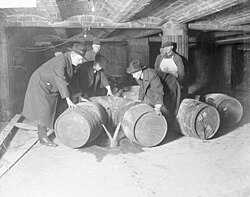
- Prohibition of alcohol occurs in the United States. Prohibition in the United States began January 16, 1919, with the ratification of the Eighteenth Amendment to the U.S.Constitution, effective as of January 17, 1920, and it continued throughout the 1920s. Prohibition was finally repealed in 1933. Organized crime turns to smuggling and bootlegging of liquor, led by figures such as Al Capone, boss of the Chicago Outfit.
- The Immigration Act of 1924 places restrictions on immigration. National quotas curbed most Eastern and Southern European nationalities, further enforced the ban on immigration of East Asians, Indians and Africans, and put mild regulations on nationalities from the Western Hemisphere (Latin Americans).
- The major sport was baseball and the most famous player was Babe Ruth.
- The Lost Generation (which characterized disillusionment), was the name Gertrude Stein gave to American writers, poets, and artists living in Europe during the 1920s. Famous members of the Lost Generation include Cole Porter, Gerald Murphy, Patrick Henry Bruce, Waldo Peirce, Ernest Hemingway, F. Scott Fitzgerald, Zelda Fitzgerald, Ezra Pound, John Dos Passos, and Sherwood Anderson.
- A peak in the early 1920s in the membership of the Ku Klux Klan of four to five million members (after its reemergence in 1915), followed by a rapid decline down to an estimated 30,000 members by 1930.[6]
- The Scopes Trial (1925), which declared that John T. Scopes had violated the law by teaching evolution in schools, creating tension between the competing theories of creationism and evolutionism.
Europe



- Polish–Soviet War (1920–21).
- Major armed conflict in Ireland including Irish War of Independence (1919–1921) resulting in Ireland becoming an independent country in 1922 followed by the Irish Civil War (1922–23).
- The Union of Soviet Socialist Republics (Soviet Union) is created in 1922.
- Benito Mussolini leader of the National Fascist Party became Prime Minister of Italy, shortly thereafter creating the world's first fascist government. The Fascist regime establishes a totalitarian state led by Mussolini as a dictator. The Fascist regime restores good relations between the Roman Catholic Church and Italy with the Lateran Treaty, which creates Vatican City. The Fascist regime pursues an aggressive expansionist agenda in Europe such as by raiding the Greek island of Corfu in 1923, pressuring Albania to submit to becoming a de facto Italian protectorate in the mid-1920s, and holding territorial aims on the region of Dalmatia in Yugoslavia.
- In Germany, the Weimar Republic suffers from economic crisis in the early 1920s and hyperinflation of currency in 1923. From 1923 to 1925 the Occupation of the Ruhr takes place. The Ruhr was an industrial region of Germany taken over by the military forces of the French Third Republic and Belgium, in response to the failure of the Weimar Republic under Chancellor Wilhelm Cuno to keep paying the World War I reparations. The recently formed fringe National Socialist German Workers’ Party (a.k.a. Nazi Party) led by Adolf Hitler attempts a coup against the Bavarian and German governments in the 1923 Beer Hall Putsch, which fails, resulting in Hitler being briefly imprisoned for one year in prison where he writes Mein Kampf.
- Turkish War of Independence (1919–23).
- The United Kingdom general strike (1926).
Asia
- The Qajar dynasty ended under Ahmad Shah Qajar as Reza Shah Pahlavi founds the Pahlavi Dynasty, which later became the last monarchy of Iran.
- The Chinese Civil War begins (1927–37).
Africa
- Pan-Africanist supporters of Marcus Garvey’s Universal Negro Improvement Association and African Communities League (UNIA-ACL) are repressed by colonial powers in Africa. Garvey's UNIA-ACL supported the creation of a state led by black people in Africa including African Americans.[7]
Economics

- Economic boom ended by “Black Tuesday” (October 29, 1929); the stock market crashes, leading to the Great Depression. The market actually began to drop on Thursday October 24, 1929 and the fall continued until the huge crash on Tuesday October 29, 1929.
- The New Economic Policy is created by the Bolsheviks in the Russian Soviet Federative Socialist Republic, to be replaced by the First Five-Year Plan in 1928.
- The Dawes Plan, which lasted from 1924 to 1928.
- Average annual inflation for the decade was virtually zero but individual years ranged from a high of 3.47% in 1925 to a deflationary -11% in 1921.[8]
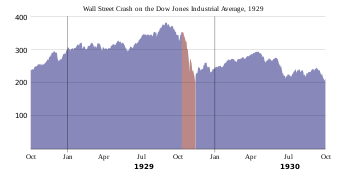
Technology
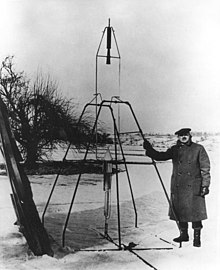
- John Logie Baird invents the first working mechanical television system (1925). In 1928 he invents and demonstrates the first color television.
- Warner Brothers produces the first movie with a soundtrack Don Juan in 1926, followed by the first Part-Talkie The Jazz Singer in 1927, the first All-Talking movie Lights of New York in 1928 and the first All-Color All-Talking movie On with the Show, 1929. Silent films start giving way to sound films. By 1936, the transition phase arguably ends, with Modern Times being the last notable silent film.
- Charles Lindbergh becomes the first person to fly solo across the Atlantic Ocean (May 20–21, 1927), nonstop from New York to Paris.
- Karl Ferdinand Braun invents the modern electronic cathode ray tube in 1897. The CRT became a commercial product in 1922.
- Record companies (such as Victor, Brunswick and Columbia) introduce an electrical recording process on their phonograph records in 1925 (that had been developed by Western Electric), resulting in a more lifelike sound.
- Robert Goddard makes the first flight of a liquid-fueled rocket in 1926.
- The first electric razor is patented in 1928 by the American manufacturer Col. Jacob Schick.
- The first selective Jukeboxes being introduced in 1927 by the Automated Musical Instrument Company.
- Harold Stephen Black revolutionizes the field of applied electronics by inventing the negative feedback amplifier in 1927.
- Clarence Birdseye invents a process for frozen food in 1925.
Popular culture
Film
- Oscar winners: Wings (1927–1928), The Broadway Melody (1928–1929), All Quiet on the Western Front (1929–1930)
- First feature-length motion picture with a soundtrack (Don Juan) is released in 1926. First part-talkie (The Jazz Singer) released in 1927, first all-talking feature (Lights of New York) released in 1928 and first all-color all-talking feature (On with the Show) released in 1929.
Music
- “The Jazz Age”—jazz and jazz-influenced dance music became widely popular throughout the decade.
- George Gershwin wrote Rhapsody in Blue and An American in Paris.
- Eddie Lang and Joe Venuti were the first musicians to incorporate the guitar and violin into jazz.
Radio
- First commercial radio stations in the U.S., 8MK (WWJ) in Detroit and (KDKA 1020 AM) in Pittsburgh, Pennsylvania, go on the air on August 27, 1920.
- Both stations broadcast the election results between Harding and Cox in early November. The first station to receive a commercial license is WBZ, then in Springfield MA, in mid-September 1921. While there are only a few radio stations in 1920–21, by 1922 the radio craze is sweeping the country.
- 1922: The BBC begins radio broadcasting in the United Kingdom as the British BroadcastingCompany, a consortium between radio manufacturers and newspapers. It became a public broadcaster in 1926.
- On August 27, 1920, regular wireless broadcasts for entertainment began in Argentina for the first time, by the group around Enrique Susini Telemachus, and failed to spark telegraphy.[clarification needed]
Arts
- Beginning of surrealist movement.
- Art Deco becomes fashionable.
- The Group of Seven (artists).
- Pablo Picasso paints Three Musicians in 1921.
- René Magritte paints The Treachery of Images.
- Albert Gleizes paints Woman with Black Glove, 1920
- Marcel Duchamp completes The Bride Stripped Bare By Her Bachelors, Even (The Large Glass).
- The Museum of Modern Art opens in Manhattan, November 7, 1929, nine days after the Wall Street Crash.
Literature


- F. Scott Fitzgerald publishes some of the most enduring novels characterizing the Jazz Age. This Side of Paradise, The Beautiful and Damned, and The Great Gatsby, as well as three short story collections, were all published in these years.
- Hermann Hesse publishes Siddhartha
- A. A. Milne publishes Winnie-the-Pooh
- Ernest Hemingway publishes The Sun Also Rises and A Farewell to Arms
- Thornton Wilder publishes The Bridge of San Luis Rey
- Alexey Tolstoy publishes Aelita
- Kahlil Gibran publishes The Prophet
- George Bernard Shaw publishes Back to Methuselah
- Eugene O'Neill awarded Pulitzer Prizes for Beyond the Horizon in 1920, Anna Christie in 1922, and Strange Interlude in 1928.
- Sinclair Lewis publishes Main Street, Babbitt, Dodsworth, Arrowsmith, and Elmer Gantry
- André Breton publishes the Surrealist Manifesto
- D.H. Lawrence publishes Women in Love, and Lady Chatterley's Lover
- Virginia Woolf publishes Jacob's Room, Mrs. Dalloway, To the Lighthouse, A Room of One's Own and Orlando
- Aldous Huxley publishes his inaugural novel Crome Yellow
- Sylvia Townsend Warner publishes Lolly Willowes in 1926
- James Joyce publishes Ulysses
- Franz Kafka publishes The Trial
- T. S. Eliot publishes The Waste Land
- Robert Lee Frost publishes New Hampshire 1923 and West-Running Brook in 1928
- Wallace Stevens publishes his first book of poetry, Harmonium
- Erich Maria Remarque publishes All Quiet on the Western Front
- Hugh MacDiarmid publishes A Drunk Man Looks at the Thistle
- Margaret Sanger publishes Woman and the New Race and The Pivot of Civilization
- Margaret Mead publishes Coming of Age in Samoa in 1928
Architecture
This section needs expansion. You can help by adding to it. (January 2010) |

- Walter Gropius builds the Bauhaus in Dessau
- Le Corbusier published the book Toward an Architecture serving as the manifesto for a generation of architects.
Fashion
Sports highlights
- 1920
- January 24: Grand Prix de Paris switches its name to Prix de l'Arc de Triomphe (horse race)
- February 13: Negro National League created (baseball)
- April: Babe Ruth began playing for the New York Yankees
- April - September: Summer Olympics held in Antwerp.
- August 17: Ray Chapman from the Cleveland Indians is killed by Carl Mays' pitch (baseball)
- August 20: National Football League founded
- Kenesaw Mountain Landis is named the first Commissioner of Baseball.
- 1921
- March 26: Schooner Bluenose launched
- 1923
- May 26: the 24 hours of Le Mans conducts their first sports car race
- October: The New York Yankees win the 1923 World Series, the first title for the team.
- 1924
- January - February: First Winter Olympic Games takes place in Chamonix France.
- May - July: Summer Olympics held in Paris France.
- July 10–13: Paavo Nurmi wins five gold medals in Summer Olympics (track and field)
- 1925
- May 28: French Open invites non-French tennis athletes for the first time
- Germany and Belgium in first handball international tournament.
- 1926
- August 6: Gertrude Ederle swims English Channel and is first woman to do so.
- September 23: Gene Tunney wins Jack Dempsey’s world heavyweight boxing title.
- 1927
- May 23: Warwickshire end Yorkshire’s 71-match unbeaten sequence in the County Championship – the longest unbeaten sequence in that competition.
- June 3: First Ryder Cup golf tournaments are held in Massachusetts
- 1928
- February: Winter Olympics held in St. Moritz Switzerland.
- May - August: Women’s Olympics takes place for first time, in 1928 Summer Olympics held in Amsterdam.
- William Ralph "Dixie" Dean wins the Football League, scores 60 goals in 39 matches for Everton F.C. (English Football)
- 1929
- The English team led by Wally Hammond defeats Australia in The Ashes series (Test Cricket)
Miscellaneous trends
- Youth culture of The Lost Generation; flappers, the Charleston, and the bob cut haircut.
- Fads such as marathon dancing, mah-jong, crossword puzzles and pole-sitting are popular.
- The height of the clip joint.
- The Harlem Renaissance centered in a thriving African American community of Harlem, New York City.
- Since the 1920s scholars have methodically dug into the layers of history that lie buried at thousands of sites across China.
- The tomb of Tutankhamun is discovered intact by Howard Carter (1922). This begins a second revival of Egyptomania.
People
World leaders
|

|
Politics
- Hendrik G. Cannegieter, Chief of the Secretariat World Meteorological Organization
- Oskar Dressler, Secretary International Criminal Police Organization
- Sir James Eric Drummond, Secretary-general League of Nations
- Christian Louis Lange, Secretary-general Inter-Parliamentary Union
- Fridtjof Wedel-Jarlsberg Nansen, League of Nations High Commissioner for Refugees
- Pierre Nolf, Chairman of the Standing Commission International Red Cross and Red Crescent Movement
- Ludwik J. Rajchman, Medical Director of the Health Section International Health Organization
- Johann Schober, President International Criminal Police Organization
- Albert Thomas, Director International Labour Organization
- Harry Thuku helped to found the Young Kikuyu Association in Kenya
- Zaccheus Richard Mahabane and Josiah Tshangana Gumede President of the African National Congress
- Marcus Garvey
Science

- Albert Einstein
- Sigmund Freud
- Alexander Fleming
- Frederick Banting
- Niels Bohr
- Werner Heisenberg
- Howard Carter
- Georges Lemaître
- Edwin Powell Hubble
- Garrett Morgan
Literature
- Bertolt Brecht
- Countee Cullen
- Nancy Cunard
- T. S. Eliot
- William Faulkner
- F. Scott Fitzgerald
- Zelda Fitzgerald
- Ernest Hemingway
- Langston Hughes
- Zora Neale Hurston
- James Weldon Johnson
- Erich Kastner
- Sinclair Lewis
- Alain Locke
- Thomas Mann
- Claude McKay
- Carl Sandburg
- William Butler Yeats
Entertainers
Musicians
Film makers

|
Artists
Architects
Sports figures
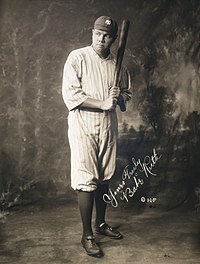
|
|
See also
Timeline
The following articles contain brief timelines listing the most prominent events of the decade:
1920 • 1921 • 1922 • 1923 • 1924 • 1925 • 1926 • 1927 • 1928 • 1929
References
- ^ Paul Sann, The Lawless Decade Retrieved 2009-09-03
- ^ Andrew Lamb (2000). 150 Years of Popular Musical Theatre. Yale U.P. p. 195.
- ^ Wilkins, Mira (1974). "Multinational Oil Companies in South America in the 1920s: Argentina, Bolivia, Brazil, Chile, Colombia, Ecuador, and Peru". The Business History Review. 48 (3): 414–446. doi:10.2307/3112955.
- ^ Price, S (1999). "What made the twenties roar?". 131 (10): 3–18.
{{cite journal}}: Cite journal requires|journal=(help) - ^ "The First Public Demonstration of Television 1925". birth-of-tv.org.
- ^ "The Ku Klux Klan, a brief biography". The African American Registry. Retrieved July 19, 2012. and Lay, Shawn. "Ku Klux Klan in the Twentieth Century". The New Georgia Encyclopedia. Coker College.
- ^ African History Timeline
- ^ "Inflation and CPI Consumer Price Index 1920-1929". Inflation Data. Retrieved 23 April 2014.
Bibliography
- Robert Sobel The Great Bull Market: Wall Street in the 1920s. (1968)

